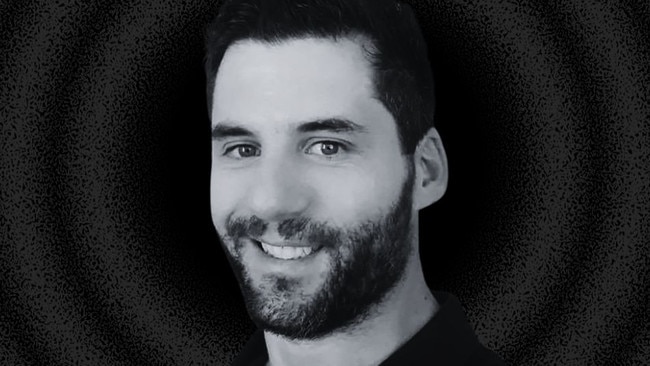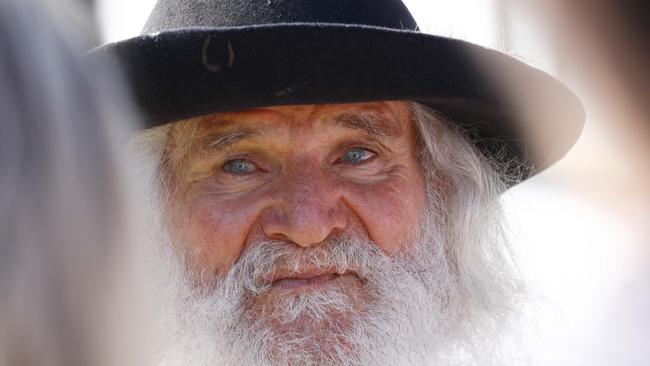Joel Cauchi slipped through a broken mental health system. Can the mess be fixed?
The human rights revolution that granted the sickest psychiatric patients their personal autonomy ultimately cast them adrift. Can the mess be fixed?

On an unseasonably warm late April night, candles flicker in the dark on the grassy slopes that frame Sydney’s Bondi Beach. Hundreds of locals sit quietly on the ground, many weeping, still shell-shocked from the massacre at their local Westfield Bondi Junction – a designer mecca so familiar to almost everyone that it’s simply known in the well-to-do eastern suburbs as WBJ.
Two weeks ago 18 people were stabbed there, including a baby, and six lost their lives at the hands of an itinerant 40-year-old, Joel Cauchi, who had a history of schizophrenia and was shot dead.
“We gather here to remember them, our candles held against the darkness,” Anthony Albanese told the gathered crowd last Sunday. “We offer the condolences of this community, our city, our state, and our entire nation to all those who loved them the most.”
Two days later in Sydney’s nearby Botanic Gardens, inside an immersive green oasis known as The Calyx, the mother of 48-year-old victim and mother of two Jade Young delivered a wretched speech that demanded much more than condolences.


“Solace was spoken of at Sunday’s vigil,” Elizabeth Young said. “Believe me, there is no solace. I am heart-fractured and angry. I am exhausted and scared of the future. I want more than five minutes of disingenuous, anodyne words from politicians, and more than three days of news coverage. I want politicians, both federal and state, to address the gaps in mental healthcare to make it a safer world for our girls and all Australians.”
Elizabeth Young has vowed to be “a lion” in seeing that this is done. She will need to be. Because barely a fortnight after Cauchi’s rampage stunned the country, the combined will among the nation’s leaders to grapple seriously with a broken mental health system characterised by constant crisis and utter dysfunction is far from apparent.
Instead a much easier narrative – which fits compellingly into the current sociological zeitgeist – has filled the gap in understanding of how Cauchi could have slipped through the holes of an unwieldy mental health system.
The facts are unknown as to his motive, but suggestions that he may have been targeting women have been fuelled by police and political leaders. If in fact he was – 10 of the 12 of the critically injured were women – then psychotic delusions are far likelier to be the explanation than misogyny, according to psychiatrists.
Cauchi was diagnosed with schizophrenia when he was 17, the typical age of onset for men. He was treated for some time in the public system, then discharged to private psychiatric care, and at some point in recent time stopped taking antipsychotic medication and went off the rails.
It’s a classic case study of the trajectory of many of the estimated (prevalence data is poor) 90,000 people in Australia living with schizophrenia who, on discharge from public inpatient care, are faced with a healthcare black hole. After-care and long-term support are all but completely missing in the community, and schizophrenic patients who can’t rely on parents often end up drifting – jobless and homeless like Cauchi.
Nothing can adequately explain or take away from the horrific nature of his actions, but it’s important to understand that it wasn’t meant to be this way.
When a 1993 report by Australia’s first human rights commissioner, Brian Burdekin, documented appalling abuse, discrimination, neglect and violations of rights of patients in asylums and mental hospitals where they often were held involuntarily, it prompted a clearing out of these institutions in line with a community-care model pioneered in Trieste under the motto of Italian psychiatrist Franco Basaglia: “Freedom is therapeutic.” Basaglia’s approach was inspired by early postmodernist thinkers Erving Goffman and Michel Foucault and existentialist Jean-Paul Sartre.
Freedom may have been therapeutic in a simple society of 250,000 such as Trieste, with little drug abuse and complex social problems, but around the world in big cities including Sydney it has not been therapeutic for anyone absent significant social and public healthcare support in the community. And absent these supports have been.
The community care pillar that was supposed to form the safety net of a deinstitutionalised system following the emptying out of asylums and long-term mental hospital wards in the wake of the Burdekin report was never sufficiently funded and still is not. The human rights revolution that granted the sickest patients personal autonomy and freed them from abuse ultimately cast many of this vulnerable cohort adrift.
Resulting frequent homelessness among schizophrenic patients has ramped up the risk to the community. Australia’s modern mental health system now relies on community care orders to force medication regimes or confine people with schizophrenia who are a danger to themselves or others, but the case workers and mental health nurses who once closely monitored these patients are thin on the ground and obtaining the orders can be challenging for doctors. Getting such an order for a homeless patient can be next to impossible.
Stranger homicides committed by people with schizophrenia are extremely rare, but homelessness and the associated loss of community treatment significantly raise the risk, says psychiatrist Matthew Large, a conjoint professor in the discipline of psychiatry and mental health at the University of NSW and a senior public sector clinician.
“What is unusual about the Bondi case is that although it seems to be a stranger homicide in the context of psychosis, there are a large number of victims,” Large says. “We will probably not see another incident like this in 30 years.
“What seems to be the case here is that this is an extraordinarily complex event that probably does include mental illness, homelessness, societal inequity and probably some chance factors as well.”
Despite the temptation to reach for a more simplistic explanation such as a motive to target women, what is known about schizophrenia and psychosis is that those who carry out violence are usually operating out of fear. Those suffering acute schizophrenia experience disordered thinking, lose touch with reality and experience false beliefs, often persecutory paranoid delusions and hallucinations.
“Most mentally ill homicides are kind of defensive,” Large says. “The offender acts to prevent something they perceive as worse from happening. Assaults by mentally ill people are usually because of a frightening delusion and the action is some form of self-preservation. Or it may not even be self-preservation, it may be a perceived altruistic preservation, a feeling that ‘I need to do this to save the world’. And so it’s very distorted thinking.”
Only scant facts are available about the trajectory of Cauchi’s life and illness, and little is known of his state of mind in the immediate lead-up to the homicides. His parents say he became obsessed with knives after he stopped taking medication. He moved from Queensland to Sydney only five weeks before the murders and appears to have had no job or fixed address. Cauchi’s father agreed his son had issues with women but said that was because he wanted a girlfriend and couldn’t seem to maintain a relationship. A former girlfriend who spoke to the media had not a bad word to say about the former Toowoomba local.
If, as seems likely, the horrific attacks committed with a 30cm kitchen knife did occur amid acute psychosis, it raises the question as to how Cauchi fell through the gaps of Australia’s disjointed mental health system. The picture as it stands doesn’t bode well.
The sorry story in mental health has been the same for decades but it’s getting worse by the year. It’s a tale of a chronically underfunded, critically overloaded, incoherent and largely inaccessible suite of services that forces all but those in extremis to find and fund their own mental healthcare.
The sickest are admitted to hospital, usually after extended and nightmarish stints in emergency, admitted to locked wards that have become stressful repositories catering to such severe illness that they’re described by staff and patients alike as places of horror.
Given the profound resourcing failures over decades in the post-Burdekin era amid the rise of the consumer rights movement in mental healthcare, the enormous needs of a vulnerable population suffering complex acute illness and, in many cases, profound disability have soaked up the scant resources. Many of the acutely unwell, itinerant and sleeping rough, have not been reached at all. Simultaneously, the rapidly rising mental healthcare demands of the less acutely unwell have been largely beyond the capacity of the public system to respond at all.
It is extraordinarily expensive to provide comprehensive care, often required lifelong, for the most severely mentally unwell patients. The dismantling of the system that kept people effectively locked up in hospitals and asylums without commensurate system-wide resourcing across the mental health system has failed not only these most disadvantaged citizens but it also has left the less acutely unwell with a dearth of vital healthcare, forced to rely on the private system if they can manage to afford it.

Public hospitals simply cannot cater for those in all manner of crises, including suicidal teenagers whose parents have been left to cope alone in despair. Little but a handful of Medicare-funded psychology sessions a year, with large gap fees, or some level of support from the NGO sector remains to help millions in mental distress. Private psychiatry is beyond the financial means of many who need it.
And still the community is less safe from rare dangers posed by the acutely unwell. “I’ve been around long enough to have worked in the larger asylum-type hospitals and see that system dissolved into general hospital-based care and community clinics,” says Michelle Atchison, an Adelaide-based private psychiatrist and chairwoman of the Australian Medical Association Council of Private Specialist Practice.
“The sad reality is that we closed those systems but didn’t fund new systems in the community adequately. So we’re left with a system that is patchy everywhere.
“There would be many of us who would say that the capacity to have asylum and stay in a hospital for a long period of time is not such a bad thing, that might be preferable to being homeless.”
The impact on patients and staff of the parlous and often scary state of mental health wards, where sexual assaults and terrifying violent outbursts are common, and the moral injury to staff of working in a system in constant crisis, is devastating and corrosive. It’s contributing to an escalating public sector workforce catastrophe.
“A public psychiatrist is a walking distributional ethicist,” says Large, who estimates that most public hospital beds on any given day are taken up by patients with schizophrenia or substance abuse-induced psychosis. “We have to make lots of very difficult decisions about who to treat, for how long, and where.”
A workforce catastrophe is looming as the inevitable result as staff break down amid unsustainable pressure and moral injury.
“It’s not an overstatement to say we’ve been haemorrhaging staff in the past 25 years in the public system,” says Jeffrey Looi, head of the academic unit of psychiatry and addiction medicine at the Australian National University.
“Public sector workers try to do their best for patients and the public. But the problem is, they can’t do it. And that leads to corrosive effects on morale.”
The disparities in health funding are system-wide, but they are rarely demonstrated more starkly than in the case of mental healthcare. It has been estimated by the Australian Institute of Health and Welfare that as many as 20 per cent of Australians will suffer a mental health problem each year.
Demand is rising exponentially: there has been a doubling of reports of mental health claims since 2017, with psychologists reporting 77 per cent increased demand in 2021 and a further 63 per cent increase in 2022. Mental and substance use disorders contribute 13 per cent to Australia’s total burden of disease, the second-highest contributor to non-fatal burden behind musculoskeletal conditions. Suicide kills more Australians than the road toll. Yet mental health’s total health spending has not changed since 1992; it still sits at only 7.3 per cent of total health funding.
“Really it can be seen as some systematic unconscious bias against the class of people who are mentally ill,” says Large, who describes the decades-long continuing failures of the post-Burdekin modern era in mental healthcare as “a sort of collision of a human rights advocacy supporting decision-making for patients with severe mental illness and fiscal conservatism”.
“The very pointy end of psychiatry is very expensive,” Large says. “The resourcing to treat a lifelong condition is extraordinary. We do need more funding, but we also need to be smart about it.
“I think in a way there have been some unconscious decisions made that mental health is sort of everybody’s problem, and more moderate mental health problems are possibly even more warranting of funding than the most severe problems. In a way it’s partially rational because those patients tend to do better, and you might get more return treating moderately mentally ill people then you do severely mentally ill people.
“It would appear to me that services would have had to have been much broader, much much broader, to capture this gentleman.”
Large is among a groundswell of policy experts who say the only way to sensibly and properly provide mental healthcare to much of the population suffering with schizophrenia is to link GP, nursing, psychiatric and social services to the provision of housing. There are only a few public psychiatric clinics for the homeless in Sydney.
Robert Parker, the director of psychiatry for the Northern Territory Top End region, points to the Ottawa strategy, short-lived because of the Canadian government pulling its support but regarded with promise by many psychiatrists as a potential new way of thinking about mental healthcare for those with the highest needs. The strategy emphasised peace, shelter, food, income, social justice and equity as prerequisites for health, shifting the focus from funding dollars to social determinants.
It was a strategy also pushed by former Treasury department secretary Ken Henry in Indigenous health. Like many of Henry’s grand visions, it was too ambitious for governments to contemplate seriously. Crippled by the complexities of federalism, commonwealth governments have preferred in recent times to outsource the funding of some of the most difficult acute healthcare, granting hundreds of millions in budget after budget to early psychosis clinics headspace and Orygen.
Many psychiatrists are critical of this trend as setting up a bespoke, parallel system with less accountability sheeted home to governments, which are attracted to funding services with brand recognition.
“It’s easier to sort of give a bunch of money to those organisations rather than actually deal with the dysfunction in your own health system and fixing up the ways that it’s broken,” says Parker.
These claims are described as “rubbish” by Orygen’s executive director, Pat McGorry, who says the clinics are fundamentally integrated with primary health networks, specialised and efficient.
Wherever the funding is flowing, the system-wide pressures are being felt everywhere as demand explodes and relative resources dwindle. The system is now well beyond breaking point, says Atchison. “I think that nobody would argue when I said that the mental health system across Australia is in crisis,” she says.
“Every public hospital mental health ward is full to overflowing. Private health systems are full to overflowing. It is a sad reality that there will be many people that continue to fall through the gaps.”
Like the horrific Cauchi crimes themselves, there will be no easy road map to bringing functionality and desperately needed access to this devilishly complex policy scene.
Large opts to sum up the quagmire with a maxim: “For every complicated problem there is a simple answer that’s wrong.”
For Elizabeth Young, surrounded by mourners inside the Botanic Gardens this week but standing alone in her grief, the sleek silver-beam architecture surrounding the gardens of The Calyx formed an enclosure as she vented her wrenching distress. The metal beams of the structure were designed to form a protective layer that unfolds to display a botanical interior, like the petals of a flower. It was an architecturally fitting venue that Jade Young would have loved.
The task of community protection to ensure no children must suffer the fate of losing their mum in the way Jade Young lost her life now lies at the feet of governments. This time, at this moment, they must not shy away.






To join the conversation, please log in. Don't have an account? Register
Join the conversation, you are commenting as Logout